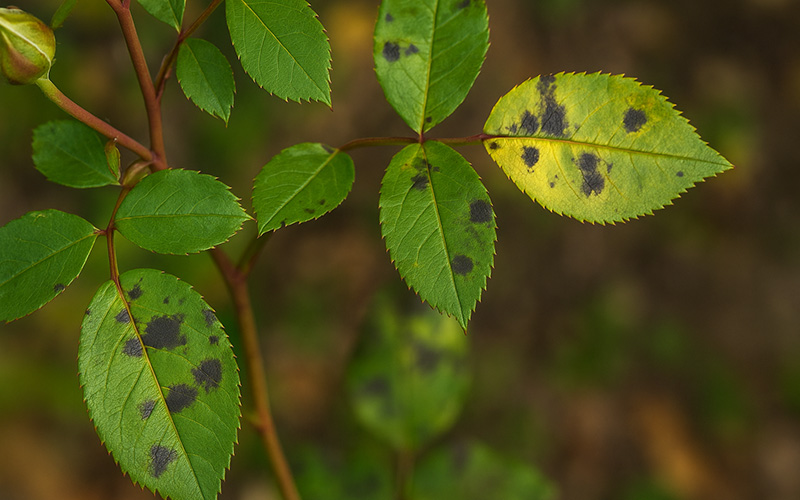Protect Your Roses from One of the Most Common and Frustrating Fungal Diseases
If you’ve ever noticed dark, round spots appearing on your rose leaves—followed by yellowing and premature leaf drop—you’re dealing with one of the most common and persistent rose problems: black spot.
Black spot is a fungal disease caused by Diplocarpon rosae. It thrives in warm, humid environments and can quickly defoliate a rose bush if left unchecked. Fortunately, with a little consistency and the right care, you can prevent black spot and keep your roses healthy and blooming.
How to Identify Black Spot
-
Appearance: Dark, circular spots with irregular edges, often surrounded by a yellow halo
-
Location: Typically starts on lower leaves and spreads upward
-
Outcome: Affected leaves turn yellow and fall off prematurely, weakening the plant
Prevention Is Key: What You Can Do
The best way to stop black spot is to prevent it from starting in the first place. Here’s how:
1. Water Smart
-
Water at the base, not overhead. Wet leaves encourage fungus.
-
Water early in the day so any moisture can dry before evening.
2. Improve Air Circulation
-
Space plants properly and prune crowded canes to allow good airflow.
-
Avoid planting roses too close to fences or walls.
3. Clean Up Debris
-
Remove fallen leaves and spent blooms from around the base of the plant.
-
Never compost infected leaves—dispose of them in the trash.
4. Mulch Regularly
-
Apply 2–3 inches of mulch around the base of the plant to prevent soil from splashing onto leaves (which can carry fungal spores).
Treatment Options if You See Spots
Even with the best care, black spot can still strike. If it does:
Organic Treatments
-
Neem oil – A natural fungicide and insect repellent.
-
Baking soda spray – Mix 1 tsp baking soda + 1 qt water + a few drops of dish soap.
-
Sulfur dust or spray – Prevents fungal spores from germinating.
Apply weekly until symptoms subside, especially after rain.
Chemical Fungicides
-
Look for fungicides labeled specifically for black spot on roses.
-
Rotate products to avoid fungal resistance.
-
Follow all label directions carefully.
Prune Infected Growth
Cut off any heavily infected leaves or canes and sterilize your pruning shears after each cut using alcohol or a 10% bleach solution. This stops further spread.
Black spot can be frustrating, but it doesn’t have to ruin your rose season. With consistent care, proper watering habits, and preventative maintenance, you can stop black spot in its tracks and enjoy lush, healthy roses from spring through fall.
🌹 Healthy leaves = more blooms. Stay ahead of black spot, and your roses will thank you with color, fragrance, and vigor all season long.
